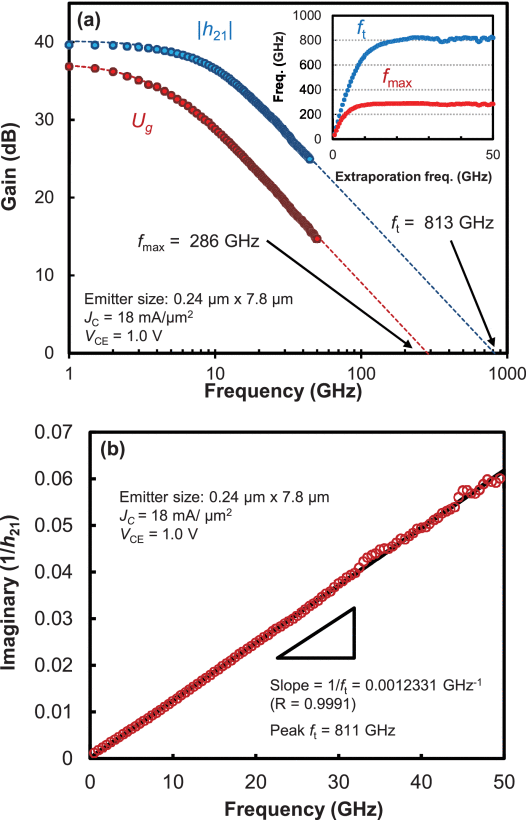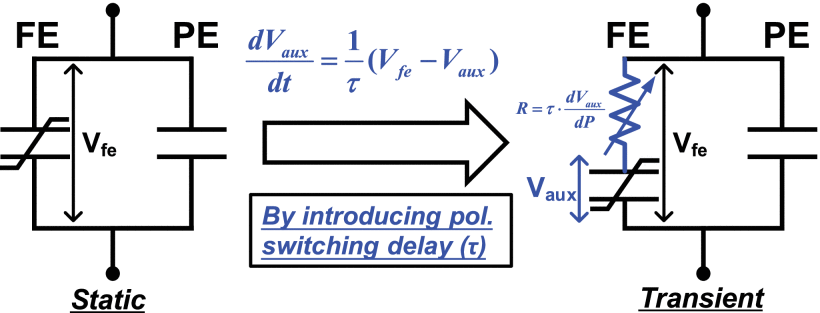Mcandrew, C.C.; Coram, G.J.; Gullapalli, K.K.; Jones, J.R.; Nagel, L.; Roy, A.S.; Roychowdhury, J.; Scholten, A.J.; Smit, G.D.J.; Wang, X.; Yoshitomi, S., "Best Practices for Compact Modeling in Verilog-A," Electron Devices Society, IEEE Journal of the , vol.PP, no.99, pp.1,1
doi: 10.1109/JEDS.2015.2455342
Abstract: Verilog-A is the de facto standard language that the semiconductor industry uses to define compact models. Unfortunately, it is easy to write models poorly in Verilog-A, and this can lead to unphysical model behavior, poor convergence, and difficulty in understanding and maintaining model codes. This paper details best practices for writing compact models in Verilog-A, to try to help raise the quality of compact modeling throughout the industry.
keywords: Capacitance, Computational modeling, Convergence, Hardware design languages, Integrated circuit modeling, Mathematical model, Numerical models
[
read more...]
REFERENCES[1] S. Liu, K. C. Hsu, and P. Subramaniam, “ADMIT-ADVICE modeling interface tool,” Proc. IEEE Customs Integrated Circuits Conf., pp. 6.6.1- 6.6.4, 1988.
[2] M. Vlach, “Modeling and simulation with Saber,” Proc. 3rd Annual ASIC Seminar and Exhibit, pp. T11.1-T11.9, 1990.
[3] E. McReynolds, personal communication, circa 1995.
[4] E. Christen and K. Bakalar, “VHDL-AMS—A hardware description language for analog and mixed-signal applications,” IEEE Trans. Circuits and Systems II, vol. 46, no. 10, pp. 1263-1272, Oct. 1999.
[5] [Online]: http://www.accellera.org/downloads/standards/v-ams (accessed June, 2015).
[6] L. Lemaitre, G. Coram, C. McAndrew, and K. Kundert, “Extensions to Verilog-A to support compact device modeling,” Proc. IEEE Behavioral Modeling and Simulation Workshop, pp. 134-138, Oct. 2003.
[7] L. Zhou, B. P. Hu, B. Wan, and C.-J. R. Shi, “Rapid BSIM model implementation with VHDL-AMS/Verilog-AMS and MCAST compact
model compiler,” IEEE Int. SOC Conf., pp. 285-286, Sep. 2003.
[8] G. Coram and M. Ding, “Recent achievements in Verilog-A compact modeling,”
MOS-AK Workshop, Dec. 2009.
[9] G. Coram, “How to (and how not to) write a compact model in Verilog- A,” Proc. IEEE Behavioral Modeling a Simulation Workshop, pp. 97-106, Oct. 2004.
[10] G. Coram and C. C. McAndrew, “Verilog-A for compact modeling: best practices for high-quality model authoring,” Workshop on Compact Modeling for RF, Sep. 2005.
[11] G. Coram, “Verilog-A: an introduction for compact modelers,”
MOS-AK Workshop, Sep. 2006.
[12] M. Mierzwinski, P. O’Halloran, and B. Troyanovsky, “Developing and releasing compact models using Verilog-A,”
MOS-AK Workshop, Dec. 2008.
[13] G. Depeyrot and F. Poullet, “Guidelines for Verilog-A compact model coding,”
MOS-AK Workshop, Sep. 2009.
[14] M. Mierzwinski, P. O’Halloran, and B. Troyanovsky, “Practical considerations for developing, debugging, and releasing Verilog-A models,”
MOS-AK Workshop, Dec. 2009.
[15] C. C. McAndrew and G. Coram, “General and junction primitives for Verilog-A compact models,” nanoHUB. doi:10.4231/D3G15TC2J, 2015.
[16] C. C. McAndrew, “R3,” nanoHUB. doi:10.4231/D3QB9V64G, 2014.
[17] L. W. Nagel, SPICE2: A Computer Program to Simulate Semiconductor Circuits, Memo. ERL-M520, Univ. California, Berkeley, May 1975.
[18] X. Li, W. Wu, G. Gildenblat, C. C. McAndrew, and A. J. Scholten, “Benchmark tests for MOSFET compact models,” in Compact Modeling: Principles, Techniques and Applications, G. Gildenblat (Ed), Springer, pp. 75-104, 2010
[19] Y. Tsividis and C. McAndrew, Operation and Modeling of the MOS Transistor, 3rd ed., New York: Oxford University Press, 2011.
[20] [Online]: http://physics.nist.gov/cuu/Constants/Citations/Search.html (accessed June, 2015)
[21] A. Parker, “Getting to the heart of the matter,” IEEE Microwave Magazine, vol. 16, no. 3, pp. 76-86, Apr. 2015. [22] H. K. Dirks, Kapazit¨atskoeffizienten nichtlinearer dissipativer Systeme, Habilitation Theses, RWTH Aachen University, 1998.
[23] A. C. T. Aarts, R. van der Hout, J. C. J. Paasschens, A. J. Scholten, M. B. Willemsen, and D. B. M. Klaassen, “New fundamental insights into capacitance modeling of laterally nonuniform MOS devices,” IEEE Trans. Electron Dev., vol. 53, no. 2, pp. 270-278, Feb. 2006.
[24] C. C. McAndrew, “Practical modeling for circuit simulation,” IEEE J. Solid-State Circuits, vol. 33, no. 3, pp. 439-448, Mar. 1998.
[25] C. C. McAndrew, “Useful numerical techniques for compact modeling,” Proc. IEEE ICMTS, pp. 121-126, Apr. 2002. [26] K. Kundert, “Hidden state in SpectreRF,” [Online]: http://http://www.designers-guide.org/analysis/hidden-state.pdf (accessed June, 2015)
[27] R. K. Johnson, The Elements of MATLAB
R⃝ Style, Cambridge University Press, 2011.
[28] M. Driessen and D. B. M. Klaassen, personal communication, 2006.
[29] [Online]: https://nanohub.org/groups/needs (accessed June, 2015)
[30] L. Lemaitre, C. C. McAndrew, and S. Hamm, “ADMS-automated device model synthesizer,” Proc. IEEE CICC, pp. 27-30, May 2002.
[31] [Online]: http://sourceforge.net/projects/mot-adms/ (accessed June, 2015)




